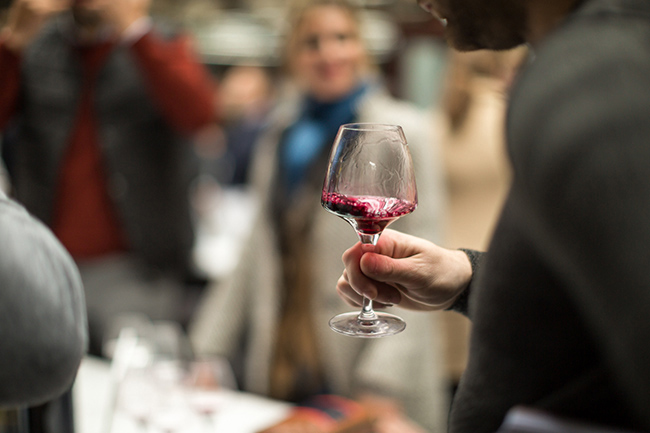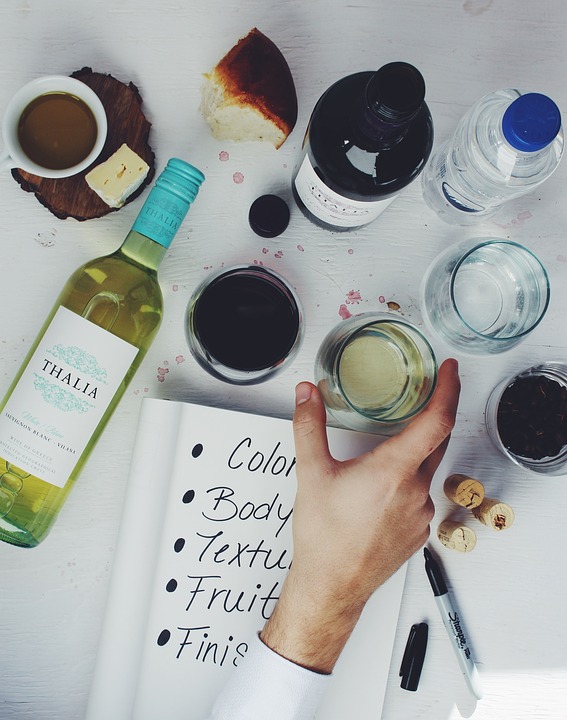Last week I read a tasting note in a wine magazine describing the flavours of a red wine as “black animal tobacco.” Now, while it is highly probable that the tasting note was shot out of the random word generator cannon, or the writer had fallen into and subsequently drowned in a stream of unconsciousness, it may also be indicative of the fact that anything goes – including puma cigarettes – in terms of describing what a wine tastes like.
Lest we forget, tasting notes are meant to function as serviceable wine descriptions.
Anyone who knows me is probably aware of my deep dislike of pretentious tasting notes. The occasional personal fleeting flight of fancy is fine, but intoxicated whimsy, resonant abstraction, misbegotten hyperbole and the thick word-piling of nouns and adjectives all serve to obfuscate rather than enlighten. No word or combination of descriptors may be missed, no metaphor unturned in that wine-language la-la land populated by thesaurus raptors (or raptures). Lest we forget, tasting notes are meant to function as serviceable wine descriptions. Pithy is preferable, original is wonderful, elegant is fine. Because a tasting note is, however, compiled at the time of tasting without much of an opportunity to edit and refine (no chance of emotion recollected in tranquillity) it is easier to scribble down every single word or image that comes into one’s head regardless of merit or accuracy, until the overall effect is the equivalent of standing under a cataract of colourful babblative language.
I am not trying to be a killjoy and censor creativity. After all, it is better to be colourful than monochrome, and bouncy rather than bland. Old school tasting notes read like a prim catechism, never deviating from straight and narrow. A well-chosen metaphor can help to make the wine come alive for others. An unwell-chosen one looks like someone is straining for effect.
Tasting wine and making accurate notes is perceived as a science by those both within and outwith the profession. It is also a serious business. The palates of so-called supertasters can, after all, be insured for six figures sums which might indicate that the noses and tongues of certain individuals are more finely-calibrated instruments than those of callow amateurs. Professional tasters – and this is doubtless part of the job description – regard themselves as infallible recording angels – no detail may withstand their intense and exacting scrutiny. They must perform to the highest level of exactitude. Their role is, in short, to decipher the wine, unpack its qualities, and put it into a descriptive word grid to become a critical judgement carved in stone.
Perhaps I am exaggerating. Wine tasting experts are not so arrogant to believe their wine critiques are a pure blend of art and science, though some may put themselves before the wine because their role is to judge on behalf of others. When it comes to personal taste, however, everyone has an opinion, whether they have experience in the subject or not.
“O, they have lived long on the alms-basket of words. I marvel thy master hath not eaten thee for a word; for thou art not so long by the head as honorificabilitudinitatibus: thou art easier swallowed than a flap-dragon.”
~ Love’s Labours Lost
One tasting note schtick is the (over)use of equivalence. This is a professional as much as an amateur malaise. Thus, wine never tastes of grapes; it must be a fanciful exotic cocktail of all fruits (or vegetables) great and small. Whilst the transformation of a raw material (grapes) into a finished product (wine) will change its nature and therefore wine may certainly remind us of more than the mere grapes that went into it, there is a tiresome tendency in wine writing and note-taking to overegg the fruit salad, so to speak, and manufacture overwrought descriptions that leave no fruit-comparison unmentioned.
Similes and metaphors also abound in tasting descriptions – which is natural as the aromas in wine unlock powerful personal memories and associations. A response to this, the use of poetic language helps us to frame our impressions in an interesting and evocative way. Being highly personal, these notes/recorded memories say more about us than they do about the wine being tasted. However, there is a difference between personal impressions and self-indulgent similes and far-fetched metaphors.
Wine does not have to be an elitist subject, neither does it need be dumbed down unnecessarily.
Finally, a word concerning the demystification of wine. A laudable objective in itself, it can sometimes turn into infantilism, when in attempting making wine accessible to a wider audience, the self-styled wine-informer ends up talking down to people. Wine does not have to be an elitist subject, neither does it need be dumbed down unnecessarily. Rather than discussing things that matter (farming, process and the nature of taste, for example) wine is too often spoken and written about as if it were no more than a utilitarian product to be marketed. The medium has most decidedly become the message. Video clips of so-called influencers cavorting with glasses or bottles of wine framed in impossibly glamorous locations conflate wine as a whole with an aspirational lifestyle. This might be viewed as part of the perennial struggle to make wine relevant to the next generation of consumers in the fiercely noisy world of drinks brands, but, in reality, it is far less to do with bringing wine to the people and more to do with advertising the services of the influencers themselves.
Talking and writing about wine may reveal our snobbery (or our reverse snobbery), our exhibitionism, our flaunting of taste, our intoxication with language, our ego, and also our receptiveness, sense of wonder and curiosity. The best communicators express themselves clearly and with evident enjoyment and a certain humour. They understand that tasting notes – and wine writing in general – subordinate the ego to what is in the glass. And to this end, they know that it is better to lay off the black puma cigarettes.



